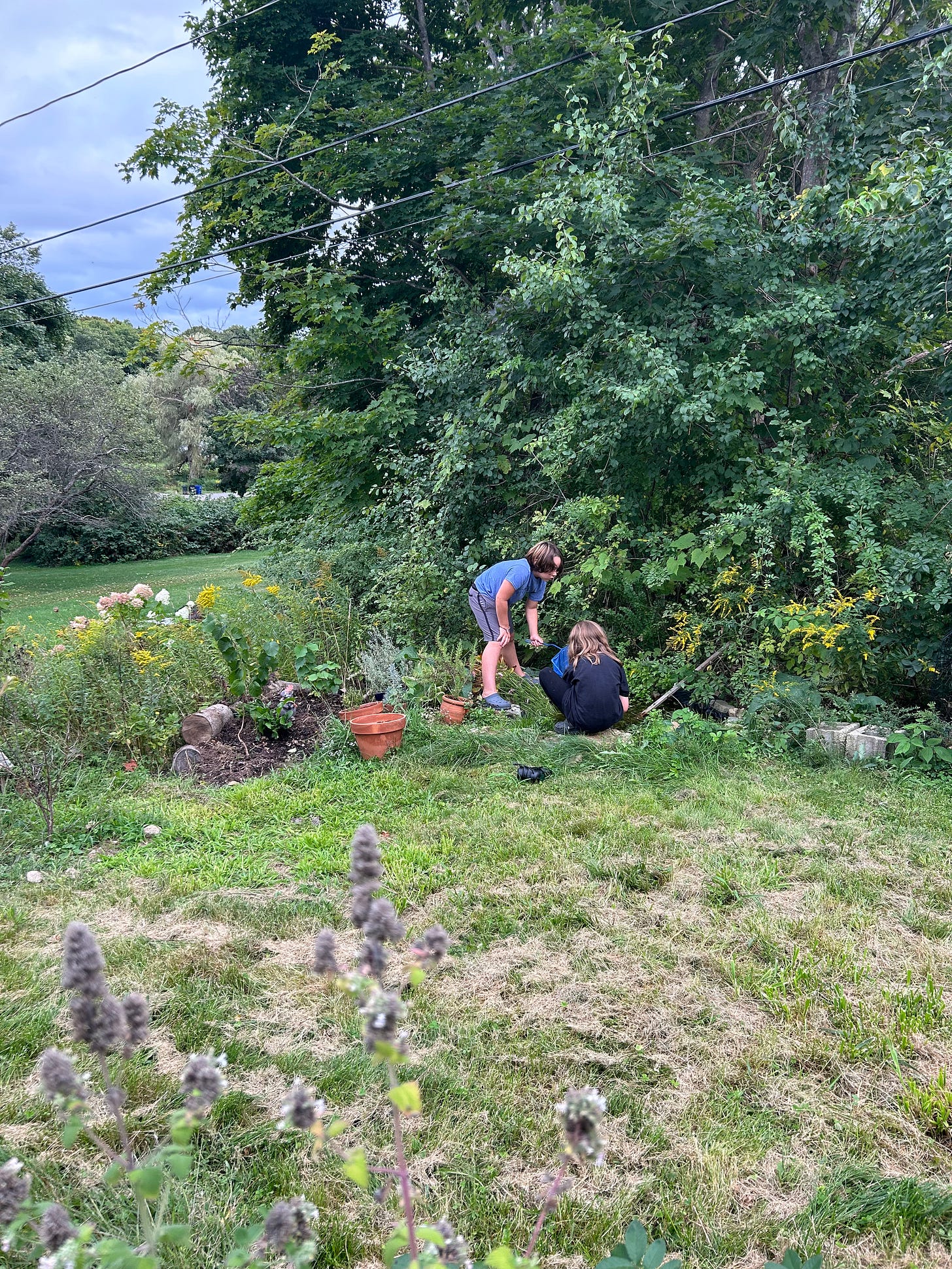Three years ago, I purchased a permaculture course which, when completed, will license me to be a certified permaculture teacher and designer. The course is structured around designing (and ideally creating) your own permaculture homestead, adapted to where you live. We moved house two years ago, at which point the plans and designs that I had started became moot, so I put it aside.
Permaculture (permanent agriculture) is a method of landscape design and agriculture that aims to create self-sustaining systems that, once established, require little human input. Think of it as the difference between a rain forest (with its trees and vines and fruits and animals) and a conventional multi-acre field of potatoes (requiring pesticides and soil amendments to ensure a bountiful crop). The forest maintains itself; the field of potatoes would give way to other plants if humans didn’t tend it regularly.
A permaculture approach for a residential property might include (for example):
grading the soil in such a way that rainwater is caught and distributed effectively by gravity
planting trees (tall), vines (climbing), shrubs (medium height) and low plants together to make the most use of available space
fertilizing the soil with grass cuttings and weeds (green manure)
incorporating chickens for fertilizing and pest control (but keeping them away from areas that can be destroyed by their scratching claws)
planting in zones - the kitchen garden being nearest to the house and (perhaps) the tall nut trees being farthest away
etc.
Permaculture was developed in the 1970’s in Australia, by Bill Mollison and David Holmgren. On the one hand, it is simply a practical, localized approach to landscaping and gardening, involving careful observation, learning from ancestral/traditional methods and eschewing the wasteful and superfluous: traditional common sense approaches, which have come (over time) to be replaced by industrial agriculture and the top-down protocols of so-called “green revolutions”. But Mollison and Holmgren also emphasized a moral component: Earth Care, People Care, Fair Share.
To understand this, it is useful to consider the term “extractive economy”, which is the idea that modern cultures often base their economies on making money from what they can extract from the earth, without taking care to replenish it. This could take the form of depleting the soil with monoculture farming, depleting fish stocks and harming other marine life with massive trawling operations, clear cutting forests - basically anything done for profit which disrupts, sometimes destroys, a complex ecosystem.
The permaculture approach aims to remedy this by designing sustainable, symbiotic systems, which benefit the earth (earth care), benefit the people (people care), and distribute benefits equitably (fair share). I think these principals are sensible: when we take care of one another we are taken care of, when we take care of the earth we don’t degrade it. Practiced on an individual or small group level, its a great place to start.
But I confess to some discomfort when permaculture is talked about in the context of larger (national or multi-national) contexts such as Sustainable Development Goals, the Earth Charter and One Health. These I consider to be top-down approaches and, like the Green Revolution, driven by people in power making decisions for “humanity”, which often doesn’t shake out well.
When I lost steam on my own permaculture certification, it wasn’t just due to the house move, it was also because I was becoming uncomfortable with the idea of hitching my pony to an ideology that (in macro-scale), I found problematic. One is not supposed to use the term “permaculture” professionally, unless they are certified instructors and/or designers (though the term is not trademarked). I suppose this is understandable, as “permaculture” could, otherwise, come to mean whatever anyone claimed it to be - but if I became “certified”, would that mean I needed to advocate for the whole enchilada?
I don’t think I should let these concerns stop me. The course offers a wealth of information about the nitty-gritty of creating simple, efficient, self-sustaining systems, and I would love to learn and teach that. I see permaculture as a type of generative design, that adapts with time and knowledge. As a permaculture student/designer/teacher, my point of view is part of the terrain, and hopefully Mollison would not have insisted on a cookie-cutter approach.
Tomorrow’s article will focus on using some of the basic principals of permaculture to create a yard plan, as I crack open the course material, apply the eraser to the graph paper and tweak the plan a bit more…






